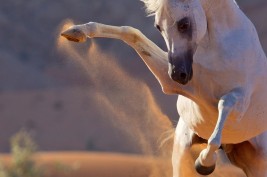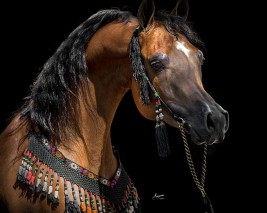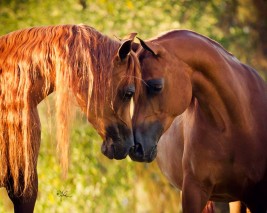By Clair Thunes, PhD Q. I’m having my mare bred this month. I know that as she enters the third trimester, her nutrition needs …
Michelle N. Anderson Finding the root cause of your horse’s anxiety and creating a plan to address it—from a veterinarian examination to a nutrition …
By Katie Navarra What can the whorl on your horse’s face tell you? Perhaps more than you thought: Researchers have learned that the height, …
Arabian horses have refined, wedge-shaped heads, a broad forehead, large eyes, large nostrils, and small muzzles. Most display a distinctive concave, or “dished” profile. …
It’s getting into the hottest days of summer. Here’s a quick heat-stress reference that’ll help you know when your horse is overheated–and what to …
By Karen Rifkin Harmony, a 35-year-old white Arabian, is one of two therapy horses participating in a newly-formed volunteer group facilitated by Megan Prout, …
Researchers take a closer look at the chestnut horse’s fiery image. By Avi Blake, DVM Since the domestication of the horse, people have placed …
By Stacey Oke, DVM, MSc Prior to vitrification, the veterinarian punctures the embryo and extracts fluid to prevent ice crystal formation, which damages cells …
By Katie Navarra Recent study results suggest that heat waves and pollen—not just dusty hay and surroundings—could also be associated with increased asthma severity …
By World Equine Veterinary Association Domestic horses’ reproductive efficiency is often lower than that of horses living in feral herds. In these situations stallions …












